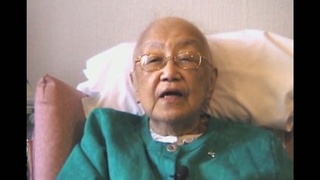Interviews
Family having to hide guns during World War II in Colombia
I'm assuming there were all kinds of curfews, and also like guns. They weren't allowed to have guns, and stuff. There's a story where my uncle said that they would come, and check on them every so often. They would send guards to go check on them, on the families. And so when they knew they were coming, they would hide the guns, and the valuables in hidey holes, or something like gopher holes that they had found where armadillos lived, or something.
They had found several little places, nooks, and crannies, and they would hide those things that were considered valuables. Even guns because guns weren't allowed. They weren't allowed to have guns, but they needed guns to survive and hunt, and whatever not because they were living practically in the rural place. And even for self defense, or I don't know snakes, whatever it is that you need guns for those things. So they would hide them until they left.
Date: September 22, 2019
Location: California, US
Interviewer: Yoko Nishimura
Contributed by: Watase Media Arts Center, Japanese American National Museum





